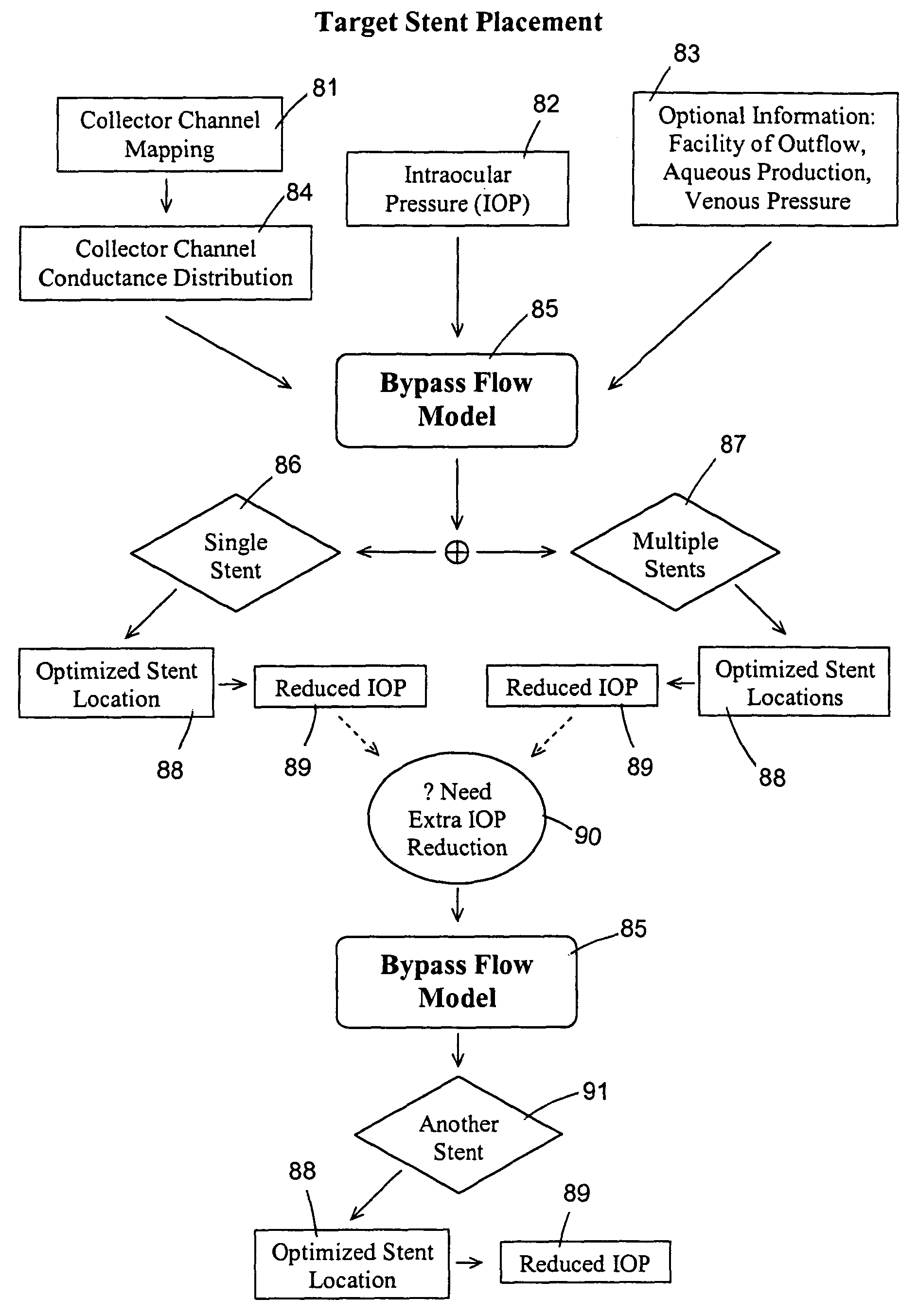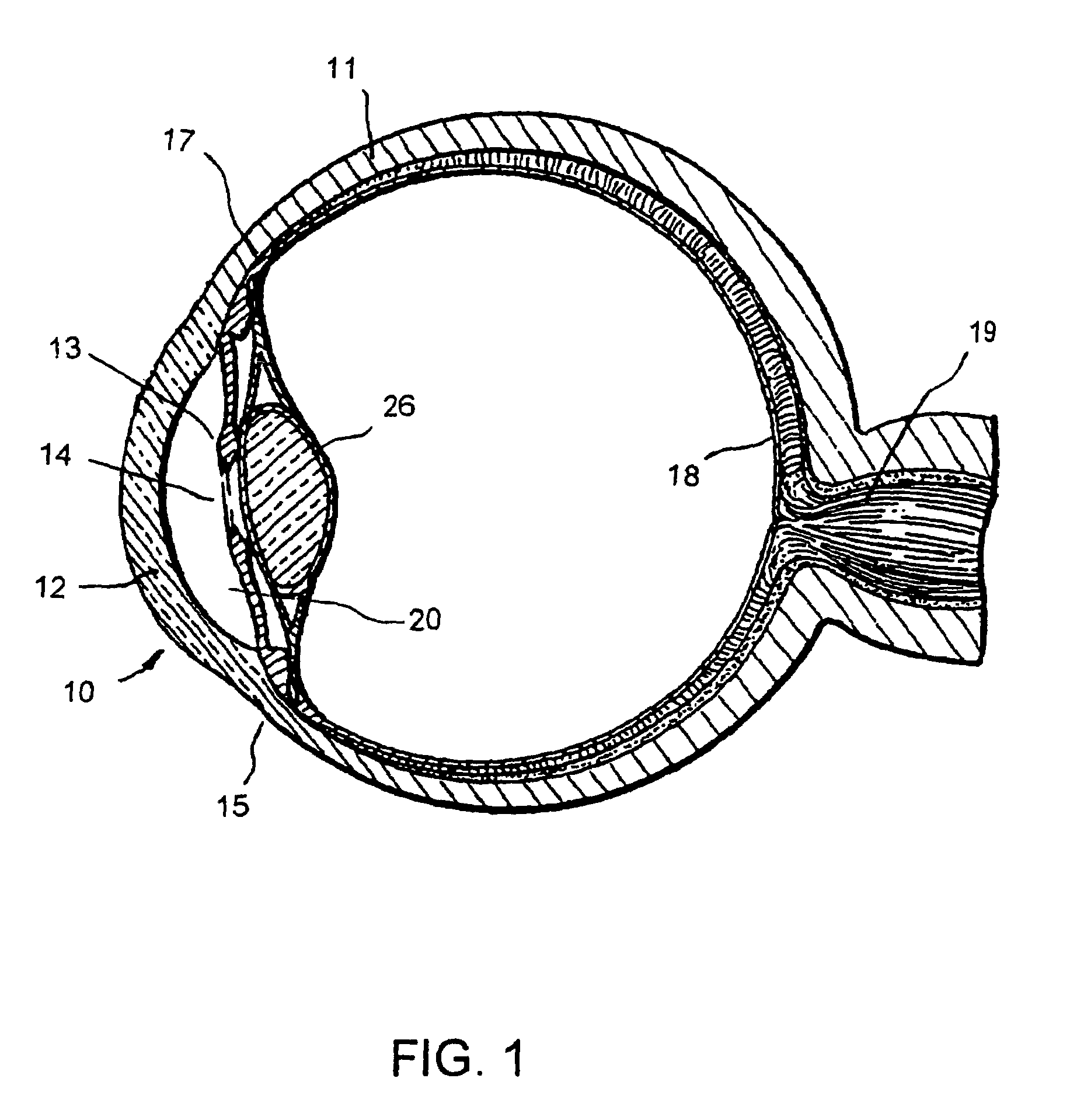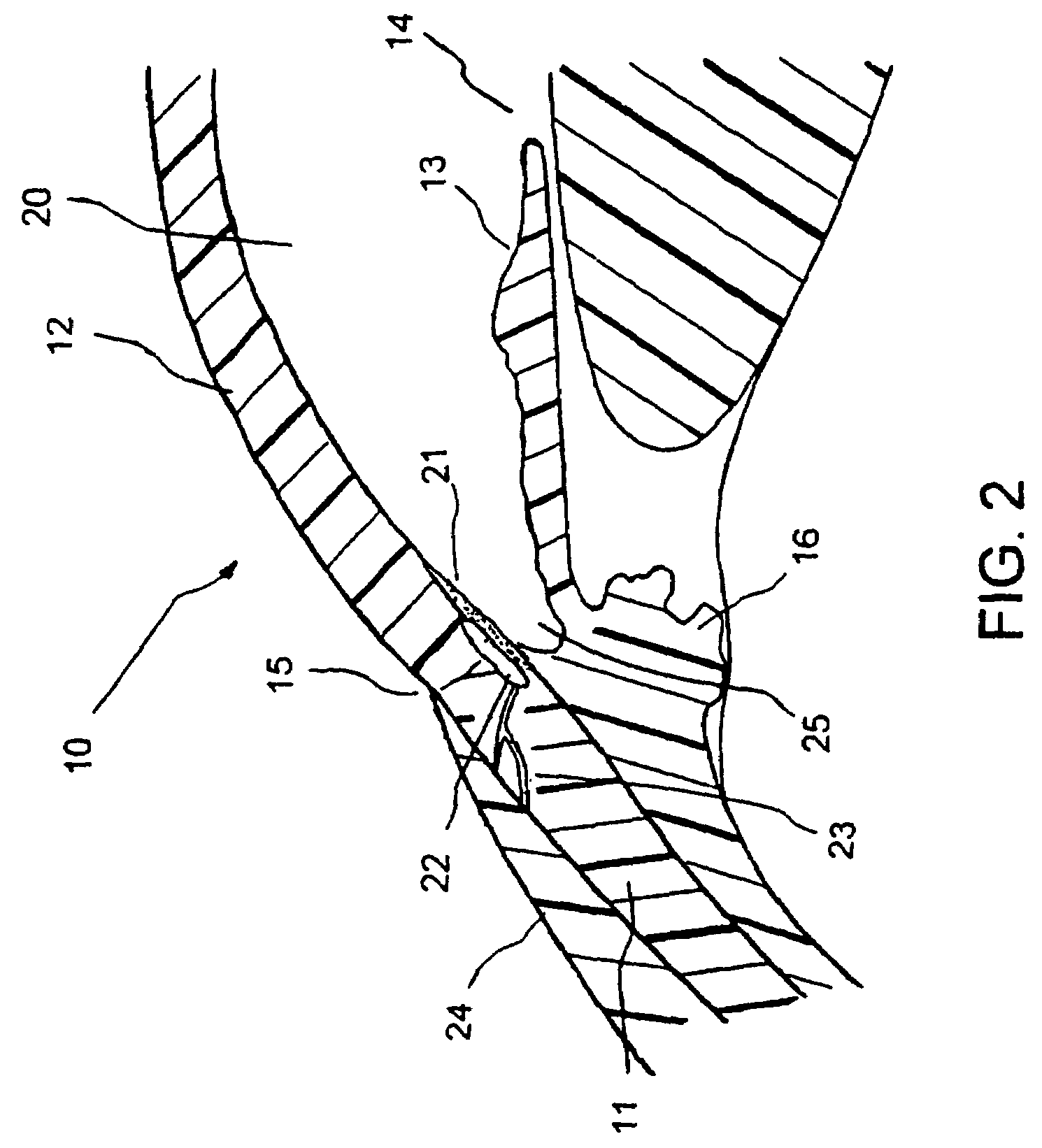Targeted stent placement and multi-stent therapy
a multi-stent, targeted technology, applied in the field of glaucoma, can solve the problems of headache, untreated blindness, and associated side effects, and achieve the effect of less expensive, faster and safer
- Summary
- Abstract
- Description
- Claims
- Application Information
AI Technical Summary
Benefits of technology
Problems solved by technology
Method used
Image
Examples
example no.1
Example No. 1
[0058]This example illustrates an IOP simulation for a normal individual, “uniform” outflow, and episcleral venous pressure of 10 mmHg. The input conditions comprise an episcleral venous pressure of about 10 mmHg, an aqueous production rate of about 2.4 μl / min, a trabecular meshwork resistance of about 1.25 mmHg / (μl / min), a collector channel resistance of about 1.25 mmHg / (μl / min) that is assumed uniformly distributed in this simulation, a Schlemm's canal resistance of about 1.0 mmHg / (μl / min) / mm, a Schlemm's canal circumferential length of about 36 mm, an aqueous humor viscosity of about 0.72 cP, and Schlemm's canal having a substantially elliptic cross section with a height of about 20 μm and a width of about 230 μm. From the bypass flow model, it is determined that this patient has an outflow facility of about 0.4 μl / min / mmHg and an intraocular pressure of about 16 mmHg.
example no.2
Example No. 2
[0059]This example illustrates an IOP simulation for a normal individual, “uniform” outflow, and episcleral venous pressure of 9 mmHg. The input conditions comprise an episcleral venous pressure of about 9 mmHg, an aqueous production rate of about 2.4 μl / min, a trabecular meshwork resistance of about 1.25 mmHg / (μl / min), a collector channel resistance of about 1.25 mmHg / (μl / min) that is assumed uniformly distributed, a Schlemm's canal resistance of about 1.0 mmHg / (μl / min) / mm, a Schlemm's canal circumferential length of about 36 mm, an aqueous humor viscosity of about 0.72 cP, and Schlemm's canal having a substantially elliptic cross section with a height of about 20 μm and a width of about 230 μm. From the bypass flow model, it is determined that this patient has an outflow facility of about 0.4 μl / min / mmHg and an intraocular pressure of about 15 mmHg.
example no.3
Example No. 3
[0060]This example illustrates an IOP simulation for a normal individual, “uniform” outflow, with bi-directional bypass. The input conditions comprise an episcleral venous pressure of about 9 mmHg, an aqueous production rate of about 2.4 μl / min, a trabecular meshwork resistance of about 1.25 mmHg / (μl / min), a collector channel resistance of about 1.25 mmHg / (μl / min) that is assumed uniformly distributed, a Schlemm's canal resistance of about 1.0 mmHg / (μl / min) / mm, a Schlemm's canal circumferential length of about 36 mm, an aqueous humor viscosity of about 0.72 cP, and Schlemm's canal having a substantially elliptic cross section with a height of about 20 μm and a width of about 230 μm, and a bi-directional bypass through the trabecular meshwork. From the bypass flow model, it is determined that this patient has an outflow facility of about 0.51 μl / min / mmHg and an intraocular pressure of about 13.8 mmHg.
PUM
 Login to View More
Login to View More Abstract
Description
Claims
Application Information
 Login to View More
Login to View More - R&D
- Intellectual Property
- Life Sciences
- Materials
- Tech Scout
- Unparalleled Data Quality
- Higher Quality Content
- 60% Fewer Hallucinations
Browse by: Latest US Patents, China's latest patents, Technical Efficacy Thesaurus, Application Domain, Technology Topic, Popular Technical Reports.
© 2025 PatSnap. All rights reserved.Legal|Privacy policy|Modern Slavery Act Transparency Statement|Sitemap|About US| Contact US: help@patsnap.com



